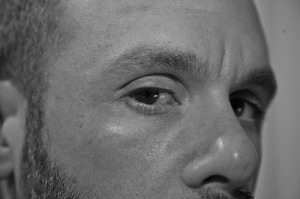She had to deal with a tall, muscular 300-pound man who would act in a threatening way and then say things like “Look at you, standing there with that stupid look on your face.”
He was scary, and it turned out that he had threatened to kill a nurse on another floor. Police had come, and in the aftermath he was barred from that floor by a court order. Yet he was sick, and needed care. How to keep the nurses safe while also providing care to a sick person? How to manage your emotions under pressure?
The thing is, he needed to be our patient, or at least he needed to be a patient somewhere. Security had asked me if he could safely leave the hospital. The answer, truly, was no. Sooner rather than later, his cancer would make him very sick. He needed treatment, but the challenge was caring for him without terrifying, or injuring, the staff.
“Are you safe?” We heard that question over and over again in nursing school, and at first I didn’t get it. I’m sensible, I thought; how could I not be practicing safely? But over time I understood how easy it is to accidentally hurt a patient. Pain control with narcotics can lead to respiratory depression. A common dose of blood pressure medicine might render an already sick patient dangerously hypotensive. The longer urinary catheters and breathing tubes are left in, the more likely they are to cause infections.
“Safe” becomes a mantra that embodies a set of values, and “that’s not safe” is a warning phrase among nurses that can address staffing issues, medication questions, or decisions like whether a patient should be allowed to stroll to another floor, because he is frail or easily confused, or because of the IV medication he is getting.
With this patient I felt personally threatened — unsafe — which made me feel scarily distracted.
Unfortunately, I’m not alone among nurses in feeling at risk. According to the American Nurses Association 2011 Health and Safety Survey, the proportion of registered nurses who rank “on-the-job assault” as one of their three greatest safety concerns is now at 34 percent, up from 25 percent in 2001. The percentage of nurses who reported actually being assaulted on the job declined in that time — to 11 percent last year from 17 percent in 2001 — but still, more than half of all R.N.’s have been verbally threatened at work.
More sobering, government statistics show that from 2003 to 2009, eight nurses were killed at work, and in 2009, 2,050 incidents involving harassment or violent assault were reported by clinical nurses.
The most accurate way to describe my patient was “menacing,” and the strain of caring for him made it difficult to focus on my work. That afternoon, after I gave him a saline nose spray, he said, “I don’t like your face,” and a member of his care team, seeing how agitated I was, assigned a different nurse — a man — to take care of him.
I felt relieved, but also humiliated. In the hospital, there’s a sense that employees who react to being threatened are not tough enough. A parallel narrative about the patient was also circulating, offered by consulting clinicians who knew him from previous admissions: He’d had a hard life; he was really a good guy.
I’m sure there was truth in those claims, but I like to think I don’t scare that easily, and this guy scared me. The most comfort I got was “He’s never physically assaulted a staff member,” which was not exactly comforting.
After all, it’s my job to take care of patients, to keep them safe — this patient included. But I discovered it’s very hard to do that if I don’t feel safe myself.

